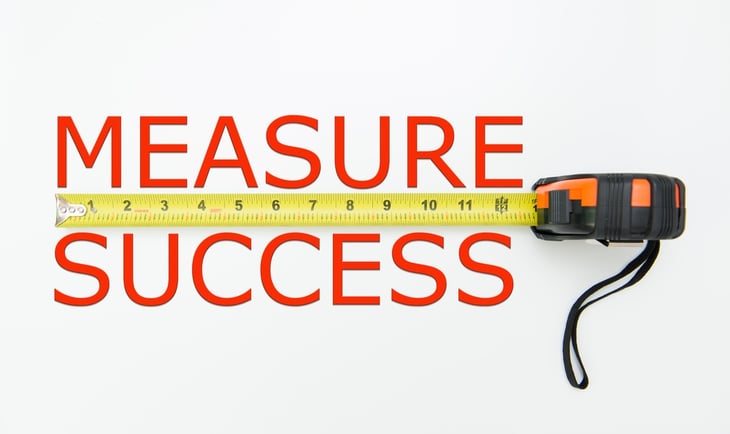
Your warehouse KPIs determine how efficiently you turn a profit. You probably already have a software package that compiles data and analyzes information. What you do with that information may determine the success or failure of your logistics business.
1. Inventory Turnover
Your inventory turnover measures how many times per year your warehouse goes through its entire stock. A high turnover rate means you’re doing something great. Products flow in and out readily and without any hitches. A warehouse management system lets you figure out weak points in your inventory before things start to sit there for a long time.
2. Back Order Rate
Back order rate shows how hard it is for you to fill orders. When demand spikes, you may see temporary back orders. If back orders become a long-term problem, you have to figure out why before you have unsatisfied customers.
3. Inventory Accuracy
Inventory accuracy is extremely important if you want to fill orders properly. If your accuracy isn’t high, you might lose a lot of customers because you don’t have anything in stock when your computer says you do have something there. Items connected wirelessly update your computers instantly to keep your inventory accurate. Large operations need technology to produce accurate numbers.
4. Inventory to Sales Ratio
Your inventory to sales ratio changes depending on the economy and how your company gets through disruptions. Predictive analytics software lets your managers figure out a way to get through cash flow problems in the future. An inventory to sales ratio can prevent back orders as well.
5. Order Picking Accuracy
Inaccurate orders leads to more returns, dissatisfied customers and less sales because clients go elsewhere. In today’s high-tech world of online ordering, a world-class accuracy order rate is 99.9 percent. Can you handle that?
6. Truck Time at the Dock
Everything within your warehouse needs to leave your unit to be profitable. If a truck spends too much time at the, dock it identifies possible staffing problems, low inventories, infrastructure or some kind of handling difficulty. Trucks should spend the least amount of time at the dock as possible so another truck can come in and load or unload.
7. Days on Hand
Days on hand is part of inventory turnover because it measures how much your storage costs build up over time. When products sit there for several days, it costs you money.
8. Cost Per Line Item Shipped
The cost per line item shipped examines the microeconomics of your logistics operation. This metric measures how much it costs to handle and ship one item out of your warehouse. It’s a good bit of data to have on hand because shipping one item melds people, computer systems and how your warehouse moves products. Any increases in metric need a closer look so you can keep costs and prices down.
9. Time to Receiving and Pick Location
How long do you need to intake inventory? This metric measures the speed and efficiency with which your staff unloads something and gets product to its place in the warehouse. This ties into your truck time in the dock and days on hand.
10. Perfect Order Management
Perfect order management indicates which links in the chain are broken, whether it’s procurement, production, transportation, labor or any stage of the warehouse process.
11. Fill Rate
The fill rate shows what percentage of orders you fill on the first shipment. This metric combines customer satisfaction and transportation efficiency.
12. Supply Chain Cycle Time
This metric measures what would possibly happen if you had no inventory on hand whatsoever. Then you determine how long it takes you to fill an order. When this time is shorter, you have better supply chain management.
13. Customer Order Cycle Time
Your customer order cycle time examines how quickly a customer gets an order. The faster, the better, in this instance. If this changes, figure it out quickly.
14. Demand Forecast
Demand forecast is hard to predict, but analytics software helps. When you have accurate demand forecasts, you prevent bumps in the road with regards to pricing, capacity and whether to expand your operations.
15. Carrying Cost of Inventory
In the big picture, your entire warehouse makes money based on this KPI. The carrying cost of inventory measures how much it costs to store inventory over a period of time. This factors in energy costs, labor, down time, shipping, freight and insurance.
16. Rate of Return
The rate of return gives you a chance to determine why customers return things. Knowing why lets you solve the problem of too many returns quickly.
17. Days Sales Outstanding
How quickly do you receive payments from customers? Fewer days outstanding means your accounts receivable department is efficient and collects money quickly.
18. Freight Cost Per Unit
The freight cost per unit talks about transportation costs. Try bundling orders together to lower your shipping costs.
19. On Time Shipping Rate
Your on time shipping rate leads to happy customers who are more likely to order more items from you in the future. When this number is high, you have a great relationship with a transportation firm.
20. Cash to Cash Cycle Time
The cash to cash cycle time measures days between paying for something coming into your warehouse before it gets shipped out. When this time is lower, your materials spend less time in the warehouse.
One way we can help manage these KPIs is through mobile workstations. Contact us today to improve your warehouse metrics with an on-the-go solution from Newcastle Systems.












